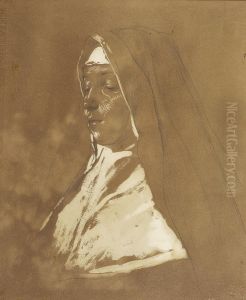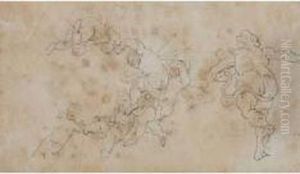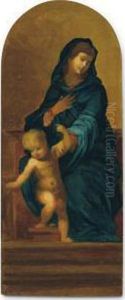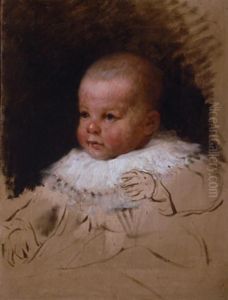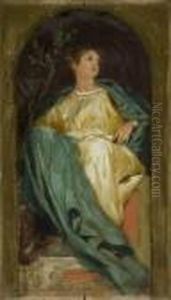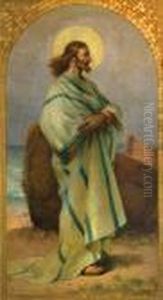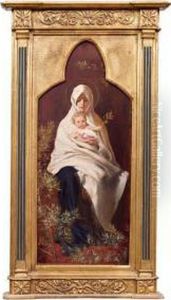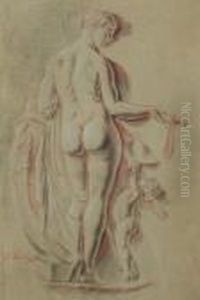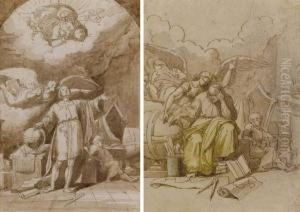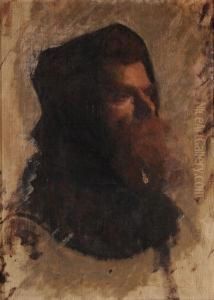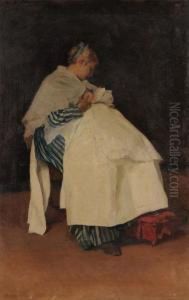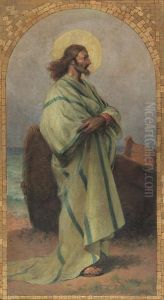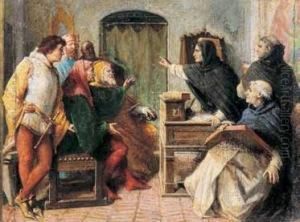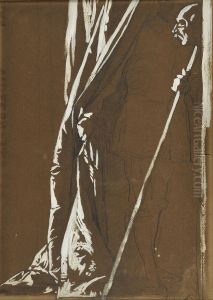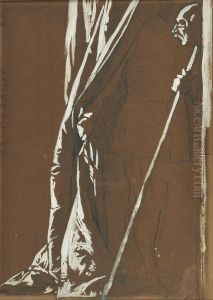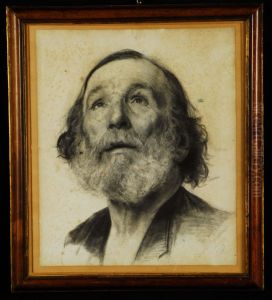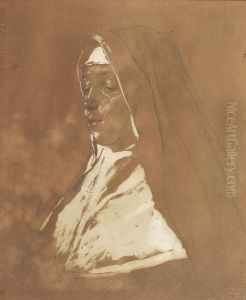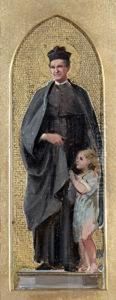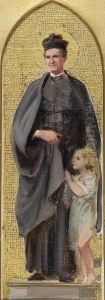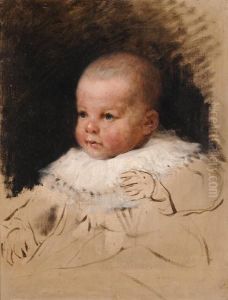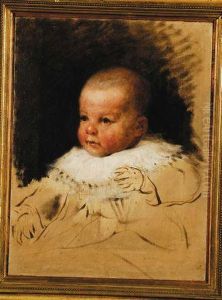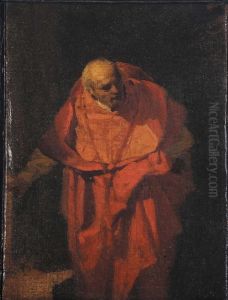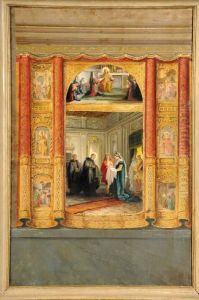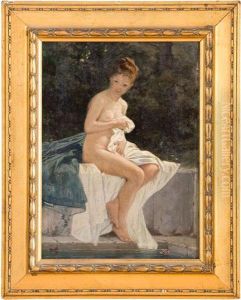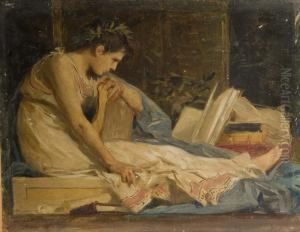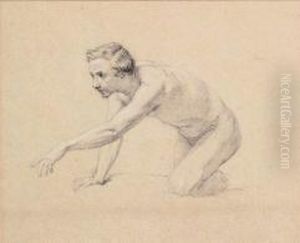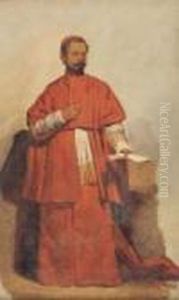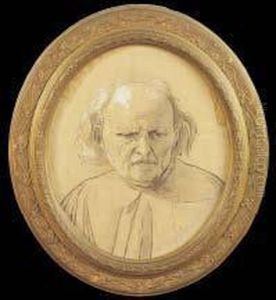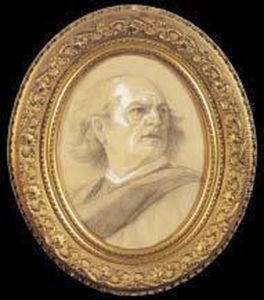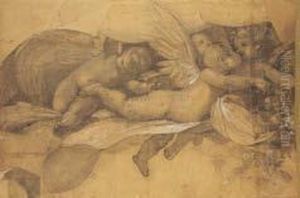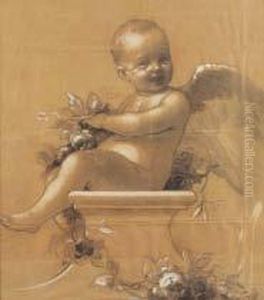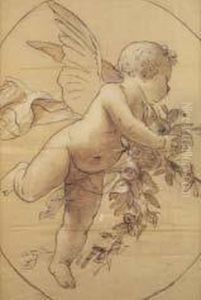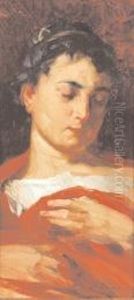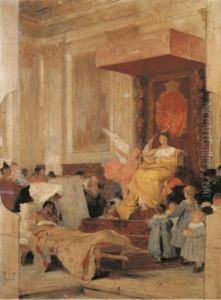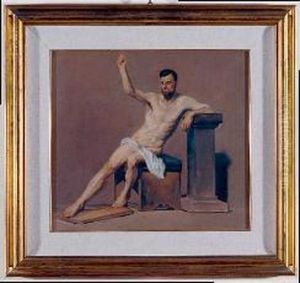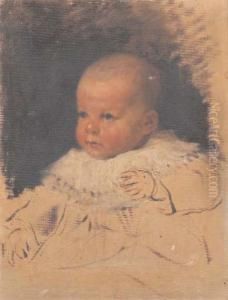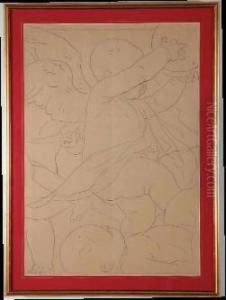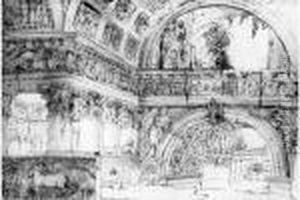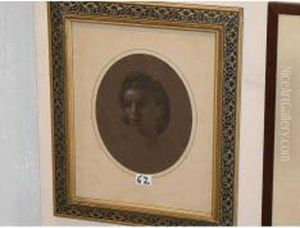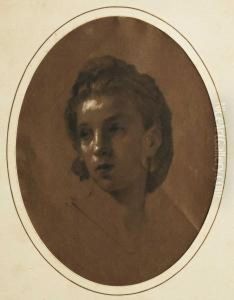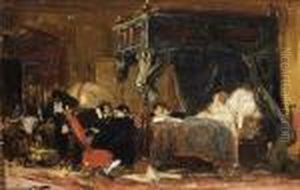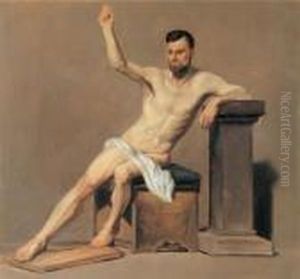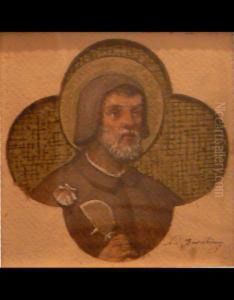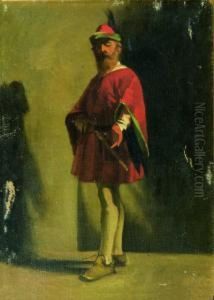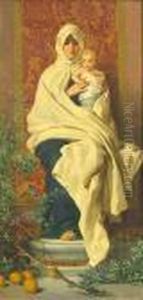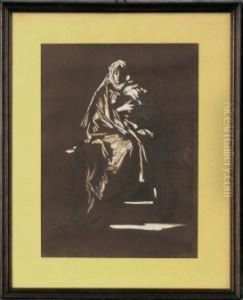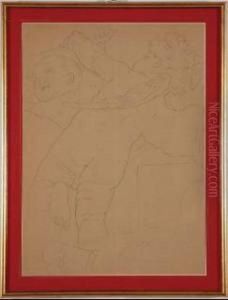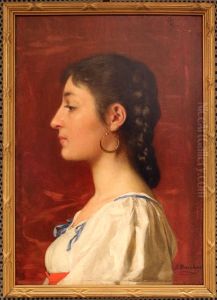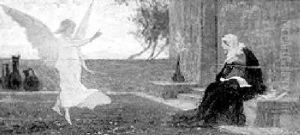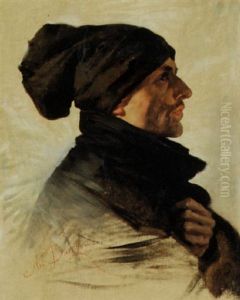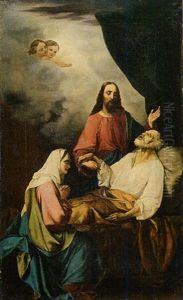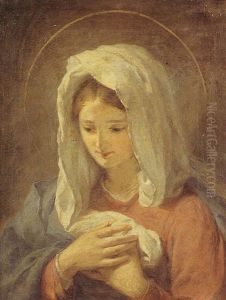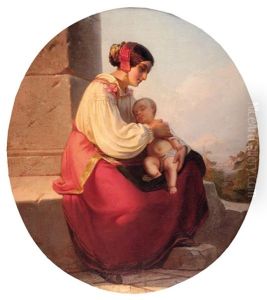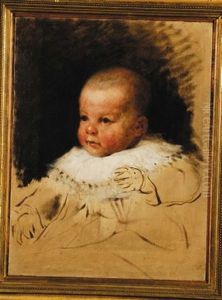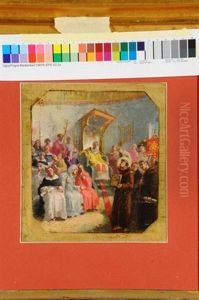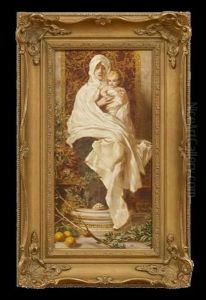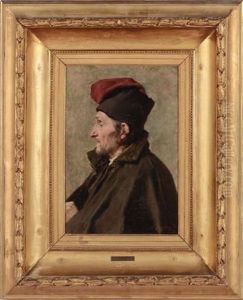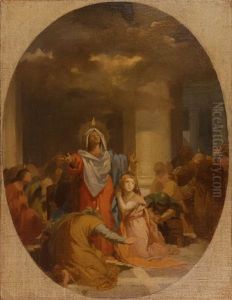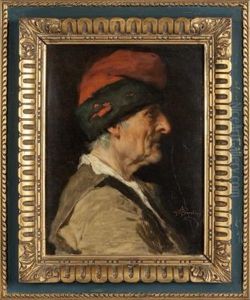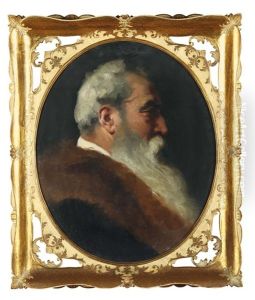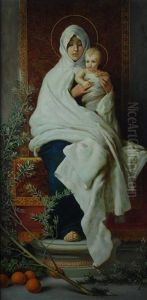Nicolo Barabino Paintings
Nicolo Barabino was an Italian painter born on October 11, 1832, in Santa Margherita Ligure, Italy. He was known for his religious works and fresco paintings. Barabino received his artistic training at the Accademia Ligustica di Belle Arti in Genoa, where he was a pupil of Santo Varni and Michele Canzio, both of whom were prominent artists of the time.
Barabino's early works were primarily religious in nature, reflecting the strong influence of the Italian Renaissance. His talent was recognized early on, and he received commissions for several major projects. One of his most significant works is the fresco decoration of the Church of the Immaculate Conception in Genoa, which he completed over a period of several years.
In 1859, Barabino moved to Florence, where he became involved with the Macchiaioli group, although he did not fully adhere to their stylistic tendencies. He was particularly influenced by the works of Fra Bartolommeo and Andrea del Sarto, and his style was characterized by a refined drawing technique and a harmonious use of color.
Throughout his career, Barabino also served as a teacher and was appointed as a professor at the Accademia Ligustica di Belle Arti, where he had once been a student. He was highly respected by his peers and played a significant role in the cultural life of Genoa.
Nicolo Barabino's work was widely appreciated during his lifetime, and he was awarded various honors, including a knighthood in the Order of Saints Maurice and Lazarus by the King of Italy. His frescoes and paintings can still be seen in many churches and public buildings in Italy, particularly in the Liguria region.
Barabino's artistic legacy is marked by his dedication to religious and historical subjects, executed with technical skill and a deep sense of devotion. He passed away on December 14, 1891, in Florence, but his works continue to be celebrated for their beauty and spiritual depth.
